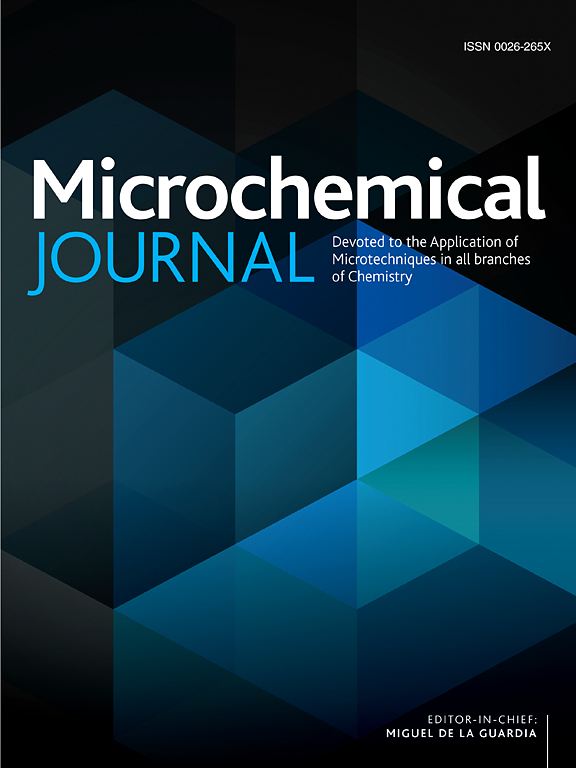Applications of nanosorbents in dispersive solid phase extraction/microextraction approaches for monitoring of synthetic dyes in various types of samples: A review
IF 4.9
2区 化学
Q1 CHEMISTRY, ANALYTICAL
引用次数: 0
Abstract
Nanosorbents are frequently used in analytical chemistry for their various applications, including extraction and microextraction of synthetic dyes. Synthetic dyes pose a threat to living organisms, particularly humans, due to their worldwide use in a variety of industries. The removal and quantification of synthetic dyes from various matrices is becoming increasingly important. The use of nanosorbents in dispersive solid phase extraction/microextraction (DSPE/DSPME) based approaches are considered the most sensitive and effective techniques for the preconcentration of synthetic dyes due to its high sample clean-up capability, low usage of solvents, high enrichment (preconcentration) factors assuring low detection limits (LOD) of the overall analytical procedures. This review describes widely used nanosorbents, their key properties, and sorption capability, as well as progress and challenges in popular DSPE/DSPME methods and their types, including magnetic solid phase extraction/microextraction (MSPE/MSPME), dispersive micro-solid phase extraction (D-µ-SPE), and ultrasound-assisted dispersive solid phase extraction/microextraction (UA-DSPE/UA-DSPME) for extraction and quantification of dyes. Nanomaterials synthesis methods are typically divided into bottom-up and top-down methods. Bottom-up techniques include hydrothermal, sol–gel, laser pyrolysis, sonochemical, chemical reduction, inert gas condensation (IGC), co-precipitation, and chemical vapor deposition (CVD). Hydrothermal and CVD are the most commonly used. These methods have several advantages, including low cost, the ability to synthesize with a more controlled design, and the release of low waste. However, suffers from ensuring reproducibility and large-scale production. Top-down techniques involve reducing the size of the bulk material to create nanomaterials. The top-down approaches include electrospinning, laser ablation, etching, mechanical milling, thermal decomposition, and sputtering. Top-down techniques yield high-quality nanostructures with precise shapes. However, costly setup and inefficiency in the case of soft materials are considered the major limitations of these approaches. The analytical instrumental technique is used to perform the final quantitative analysis step in these microextraction-based methods. The most common analytical instruments used with these sorbent-based microextraction techniques are UV–visible spectrophotometers, high performance liquid chromatography (HPLC) with UV or diode array detectors (DADs), and liquid chromatography with mass spectrometers. Among the available methods, dedicated procedures for analysis of popular dyes such as Sudan dyes, sunset yellow, malachite green, methylene blue, crystal violet, tartrazine, and azo dye were developed. These methods provide limit of detection (LOD) values at the ppb range, thus meeting the sensitivity demands for environmental analysis and monitoring.

求助全文
约1分钟内获得全文
求助全文
来源期刊

Microchemical Journal
化学-分析化学
CiteScore
8.70
自引率
8.30%
发文量
1131
审稿时长
1.9 months
期刊介绍:
The Microchemical Journal is a peer reviewed journal devoted to all aspects and phases of analytical chemistry and chemical analysis. The Microchemical Journal publishes articles which are at the forefront of modern analytical chemistry and cover innovations in the techniques to the finest possible limits. This includes fundamental aspects, instrumentation, new developments, innovative and novel methods and applications including environmental and clinical field.
Traditional classical analytical methods such as spectrophotometry and titrimetry as well as established instrumentation methods such as flame and graphite furnace atomic absorption spectrometry, gas chromatography, and modified glassy or carbon electrode electrochemical methods will be considered, provided they show significant improvements and novelty compared to the established methods.
 求助内容:
求助内容: 应助结果提醒方式:
应助结果提醒方式:


